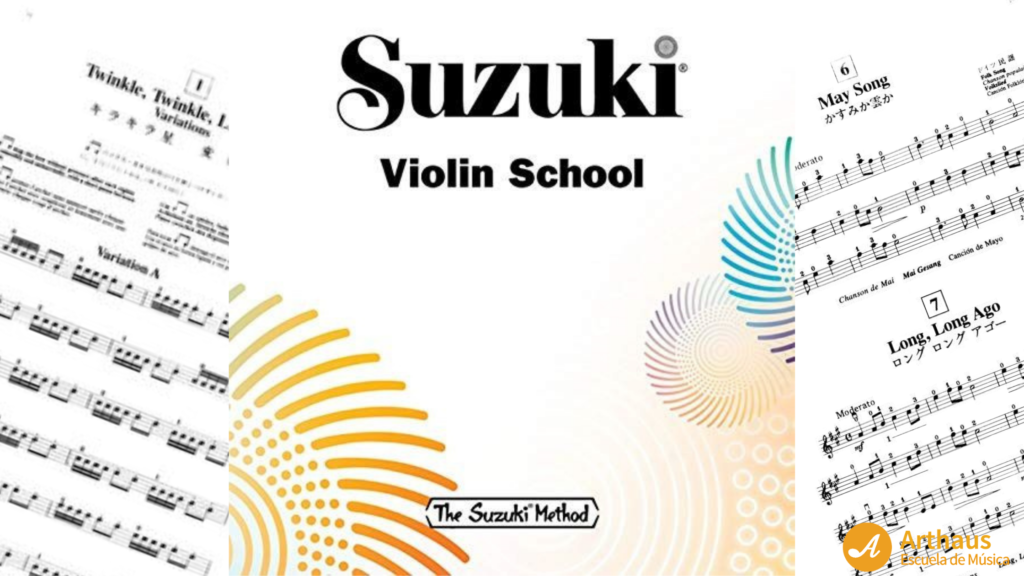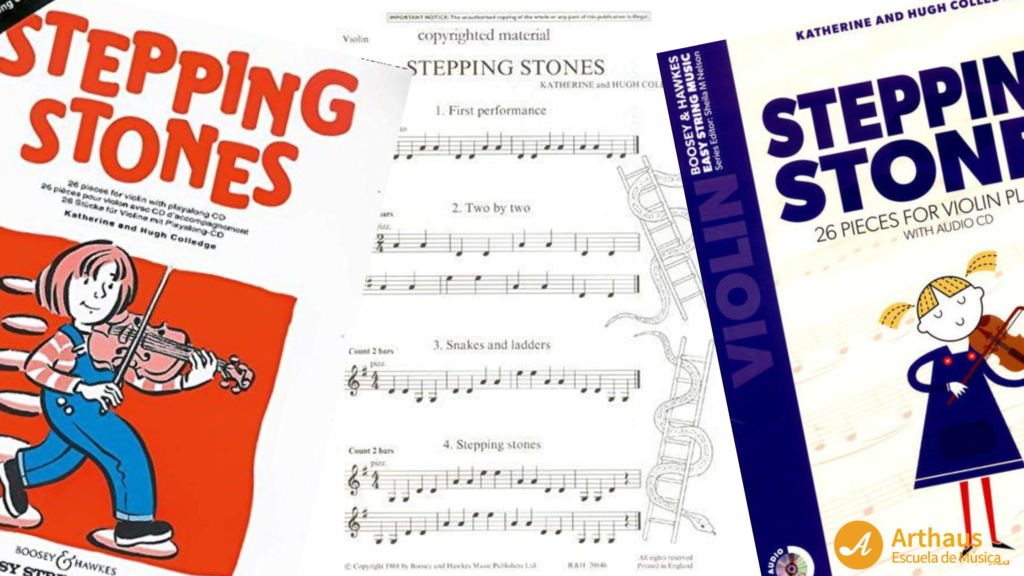In the vast literature on violin methods for both children and adults, we can find violin methods focused on the bow, violin methods for position changes, double strings, octaves, scales, finger independence, speed, etc.
I’d say each of the skills or difficulties in violin playing has an associated method. I don’t know of any methods that focus solely on vibrato, but perhaps there are some.
But if you’re just starting to learn to play the violin, you’ve probably heard about the Suzuki violin method for children.
It has undoubtedly become the most popular method for getting started with the violin, but with a focus particularly dedicated to children, for some adults looking to learn to play the violin from their favorite songs, the method may not be what they expect.
In this article, we’ll review the main violin methods for children. These are even simpler than the Suzuki method and allow children to gradually become familiar with music and then play any melody or melodies suggested by the Suzuki method.
All violin methods by level
This is the first article in a four-part series where we review all the violin methods for children and adults, starting with children, then methods for beginners, intermediate, and advanced players.
In each article, you’ll learn to identify which category you belong to if you don’t already know.
Below our explanation of each method, you’ll find links to download the methods in PDF format and the option to purchase them on Amazon.
Our goal isn’t to promote piracy. If we had a violin method, we’d want people to buy the original, but we know that not everyone can afford these books due to their cost or country-specific restrictions.
That’s why we encourage everyone to choose what they need for their current situation. We want affordability to not be an impediment for anyone who wants to learn an instrument like the violin.
That’s why, if you can, we invite you to buy the books, but if not, you also have the link to download all the violin methods in PDF format, for free.
Suzuki Method for Children

Without a doubt, the best-known method of all, both for children and adults, but especially with a strong focus on children.
Let’s say you buy Suzuki Method Book 1, you already know how to read sheet music, and you want to start teaching your children or young students the basics of the instrument, you won’t find anything there.
You’ll find a compilation of children’s songs arranged by difficulty, but when it comes to how to support the right hand, the position of the violin on the shoulder, the bow grip, and the placement of the first fingers, the book doesn’t cover any of that, except for these illustrative photographs of the basic positions.
The Suzuki student book is not an “organic” beginning for any child; they need to know how to read violin sheet music, the parts of the violin, how to tune the violin, and how to position their fingers on the neck.
All of this, which seems to be missing from the book, is what Suzuki’s method teachers teach their students through violin games and exercises.
That’s why the student book is just a fraction of what the Suzuki method offers, but unfortunately, that knowledge is reserved exclusively for the method’s teachers, who are specifically trained to teach the methodology of the most popular method of learning the violin.
It is not a method for everyone
That’s why the Suzuki Violin Method isn’t a book you can pick up and start applying to children. For adults, it’s a different story. With a little knowledge of the basics of the violin, we already have a repertoire of easy scores to play on the violin, one after the other.
The only downside is that they all have a childish tone and you’re likely to get bored halfway through.
That’s why it’s often difficult to find a violin course for adults that includes music that isn’t so childish, but there are some out there, let me give you a hint… US!
But continuing with violin methods for children, we can find other options on the market besides the well-known Suzuki.
Here are the links to download or purchase the Suzuki Violin Method Book 1:
Suzuki Violin Method in Free PDF
Suzuki Violin Method on Amazon USA
Stepping Stones

This method was my first violin method, also focused on children, but with a particularity unlike the Suzuki method.
The learning process is truly progressive but also motivating, since without learning how to position your fingers, just by playing with open strings, you can already play something that sounds good and is essential with an instrument as complex as the violin.
It is also an excellent method to begin reading violin music for the first time, because we only have to play the open strings, that is, without resting our fingers on the neck, and identifying them on the staff with their respective figure (half note, black note, eighth note) we are already playing the first notes on the violin.
Piano accompaniments for playing together
Each piece is accompanied by a piano recording to play while you play your instrument, so you’re learning to play along with another instrument from the very beginning.
Even if it’s a recording, playing together is a fundamental skill for any musician and one that should be developed from the very beginning.
Once you’ve mastered using open strings and playing along with the recording, the book begins to progressively add fingering and other difficulties.
For this reason, I consider it a recommended option to start with children and even with adults who want to see immediate results.
Here are the links to download or purchase the Stepping Stones violin method :
Stepping Stones in PDF format for free
Fiddle Time Joggers

Something similar to Stepping Stones is Fiddle Time Joggers , also with the same progressive spirit of starting with open strings and even using the pizzicato technique.
Unlike the previous violin method, this one has a more youthful style, especially when we can begin to place our fingers.
The styles are more similar to jazz or American folk, making this method for adults much more entertaining and motivating.
Training the musical ear
But if we use it for children, we are expanding their musical ear by being able to play other diverse styles that are difficult for even some adults to understand due to their harmonic complexity, which greatly enhances their future adaptability to different rhythms and styles.
The original book includes a CD with all the accompaniments so that any self-taught person with basic violin knowledge can easily learn it. There are 47 pieces to start learning this instrument on the right foot.
With this method, we’ll be playing familiar violin music with its accompanying accompaniment without losing enthusiasm, as long as we know how to deal with the difficulties that arise.
Our advice is to always seek the support of a teacher when attempting any of these methods, who can explain the basic elements of the violin and how to overcome any initial difficulties.
At this early stage, we can begin to develop bad habits that are difficult to unlearn later on. That’s why we recommend having guidance from a teacher so that, with the support of parents, the child or adolescent can continue to develop their way with the violin.
Here are the links to download or purchase the Fiddle Time Joggers violin method :
We couldn’t find the free book 🙁
Fiddle Time Joggers on Amazon USA

